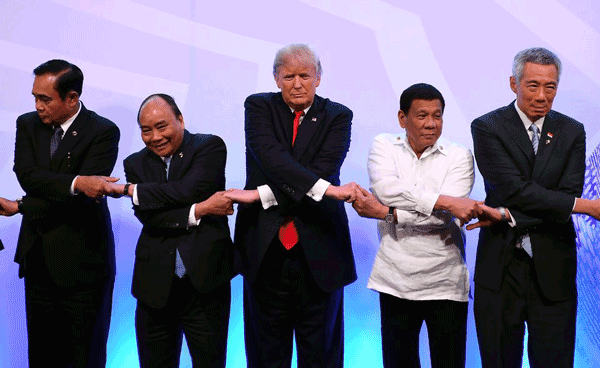MANILA -- This week marks the 43rd year of establishment of diplomatic relations between the Philippines and Russia.
It was on June 2, 1976, when the government of the Philippines forged formal diplomatic ties with the Union of Soviet Socialist Republics (USSR).
In 1999, the Russian Federation assumed all the responsibilities and obligations arising from the Philippine bilateral relations with the USSR. And for more than four decades, the relationship continues to grow and prosper with the increasing number of high-level exchanges between the two states.

First Russian Consulate in Manila
Some 202 years ago, Peter Dobell, the first Russian Consul in Manila, was appointed to the Philippines in 1817.
He was dispatched to Okhotsk in March of the same year. He resided in China from 1801-1808 before moving to Manila in 1808.
In 1812, he arrived in Petropavlovsk with a shipment of foodstuff and began his trans-Siberian journey from Kamchatka in 1812, Perm in 1813, and St. Petersburg in 1814 where he submitted his report to the Russian American Company.
His report noted that Manila was more than willing to trade with Russia because of shared objections to the presence of the East India Company.
He proposed to establish a permanent consul for the Okhotsk-Manila trade to learn more of the market in Guangzhou and to promote trade between Manila and Kamchatka with Manila supplying maintenance products needed in the Russian colony in the east.
Dobell, in effect, suggested a triangular trade between Kamchatka, Manila, and Canton.
He wrote: "as soon as this trade begins, the Chinese will bring to Manila everything that they can sell to the Russians so that Russia can make use of all the benefits of their trade."
When the first Russian brig, the Rurik, captained by Lieutenant Kotzebue arrived in Manila in December 1817, no mention was made of the Russian Consulate in Manila, nor Peter Dobell, during the 1817-18 visit.
It is understood that when the ship left Russia in 1815, Dobell had just completed his proposal to the Tsar a year earlier. It was not until early 1817 when the proponent of the plan was himself appointed.
As he was dispatched to Okhotsk, it was very likely that he was a non-resident Consul in Manila, or was traveling between Manila and Okhotsk considering he had two official secretaries assigned to watch him in Okhotsk and he owned a house in Kamchatka.
He did maintain his house in Manila which was eventually destroyed during the chaos in 1820. His nephew maintained the house while he was away.
Another reason why the Consulate was a non-resident was the Spanish government's position of not granting recognition to a formal Russian mission, reducing it to unofficial capacity.
In 1820, Dobell brought out a proposal for joining the Hawaiian archipelago by means of an armed expedition. This proposal, however, was not given serious attention. The Consulate was terminated de facto in 1820 and de jure in 1826.
Russian ships in 19th Century Philippines
Aside from the opening of the Consulate in 1817, the year also witnessed the first arrival of a Russian ship in Manila.
The Rurik was a Russian brig on a voyage of discovery into the Bering Straits for the purpose of exploring a north-east passage. The voyage was at the expense of the Grand Chancellor of the Russian Empire Count Romanzof.

In command of the expedition was Otto von Kotzebue, a Lieutenant in the Russian Imperial Navy who, as a cadet, made his first travel around the world with Commodore Adam Johann von Krusenstern on board Nadeshda in 1803-06 (the second ship of the same expedition, Neva, passed the Bashee Island 27th November 1805 from the Mariana on its way to Macao).
It was the Commodore who recommended him to Count Romanzoff as eminently qualified for the purpose.
Rurik has the distinction of being fitted for repairs in Cavite.
Since the 20th of December, some 100 men were tasked to do quick and extensive work on the Rurik. Her sails, tackling, boats, masts, pumps and even water-butts were found to be unserviceable. Her copper-sheathing, too, was in need of replacement with her bottom gnawed by worms.
With permission from the Governor, Rurik was fitted with a new copper cover. By 14th January, the ship was rigged and ready to continue her journey around the world.
Kotzebue came to the Philippines again during his new voyage around the world under the appointment of Emperor Alexander I in 1823-26. The Russian frigate Predpriatie and her crew of 145 arrived in Manila on 8th November 1825 and had the frigate repaired in Cavite. She left 10th of January 1826.
The third and final Russian visit was headed by Frederick Lutke (Fedor Petrovich), in his voyage around the world in 1826-1829 under the order of Emperor Nicholas I.
His main ship, the corvette Seniavin and its accompanying ship, the Moller under Captain Stanioukovich, dropped anchor on 13 January 1829, with Moller in Manila much earlier. Both ships left on the 30th of January.
It took more than two decades before another Russian vessel docked in the Philippines. By then, Russian expeditions in the Pacific have ended.
A new era in Asia was emerging with the forced opening of Japan and the Western domination of China.
Both the Philippines and Russia underwent revolutions in the late 19th and early 20th centuries and were caught in two world wars and the ideological war after.
It was at that period when the two countries extended the hand of partnership and forged a relationship that endures until today. (Geronimo Suliguin)
(About the author: Geronimo Suliguin took his postgraduate course in historical studies at the Oxford University and is currently taking Diplomatic Studies at the Lincoln College, Oxford University. Suliguin served as the Acting Director of the Department of Foreign Affairs-Office of Public Diplomacy)








